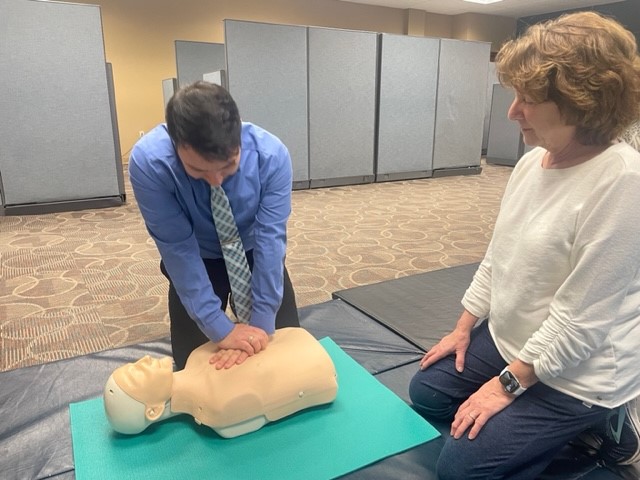Ensuring patients receive the appropriate level of care at the right time is one of the most essential elements in determining their long-term success and preventing readmission. Long-term acute care hospitals (LTACHs) provide a unique offering to the continuum of care, by serving patients with medically complex problems who need more specialized care than a lower level of care can offer. When an acute care hospital discharges a patient to an LTACH, they are transferring that patient to a similarly high-quality level of care where the patient can continue to receive access to the services not always present in lower levels of care, such as a skilled nursing facility (SNF). LTACHs are experienced in ventilator management and weaning, managing patients with multiple organ system failure, and complex wound care. Most patients stay at an LTACH for more than 25 days, due to their high acuity and need for daily physician rounding. When a hospital discharges a critically ill patient from an acute care hospital to a lower level of care, like a SNF, the risk that the patient may experience a setback increases, which could result in the patient being readmitted to the acute care hospital, additional complications, and an increase in medical costs.
Unfortunately for patients all over the country, the criteria for admission to an LTACH just became more challenging, following the recent end of the public health emergency (PHE) related to the global pandemic. This change could increase the risks for critically ill patients being discharged from acute care hospitals of not getting the highest and most appropriate level of care possible to best treat their condition. To meet the recently reinstituted Centers for Medicare and Medicaid (CMS) criteria for the LTACH level of care, patients must have spent a minimum of three midnights in an intensive care unit or require the extended use of a ventilator of at least 96 hours. During the pandemic, this restrictive criteria was temporarily suspended to reduce the strain on overflowing hospital systems and improve patient access to care. There are medically complex, difficult-to-treat (e.g., wound care), and/or critically ill patients who could benefit from the type of services provided by an LTACH, but because they do not meet the specified CMS criteria, Medicare will only cover the cost of care for those patients at a much lower rate. As a result, although patients may benefit significantly from the LTACH’s specialized services and higher level of care, they may be admitted to a lower level of care with fewer resources, less specialized services, and higher readmission rates simply because it is the less expensive option.
Additionally, LTACHs will see payments for their care and services reduced, which, in some cases, is far below the actual cost of care provided. As LTACHs struggle to stay open due to increased costs and lower reimbursements, medically complex patients who could benefit from an extended, high-quality hospital stay may soon see their options reduced. This could have devastating consequences for patients who might be forced to go to a lower level of care like a SNF or even return home with home health. Certainly, both of those care levels serve a distinct purpose and have incredible value. However, studies show that when medically complex patients transition to those care levels too soon, they often end up back in the emergency room and acute care hospital as a hospital readmission.
The Many Downsides of Hospital Readmissions
Hospital readmissions cause tremendous stress for patients and their families and are a major driver of increasing healthcare costs, which impacts all of us by contributing to Medicare expenses. The National Institutes of Health estimates that in 2020, “over $52.4 billion is spent each year to care for patients who were readmitted to the hospital within 30 days for a previously treated condition.” The leading diagnoses for hospital readmissions according to 2018 data from the Agency for Healthcare Research and Quality include sepsis, heart failure, diabetes, chronic obstructive pulmonary disease, pneumonia, and renal failure.
Many hospital readmissions can be avoided. One way to reduce readmissions it to ensure that patients receive specialized care that includes oversight by medical experts, patient and family education, and follow-up to help patients be better able to manage their medical conditions to promote long-term success. LTACHs can provide the type of resource-intensive care, medical support, education, and post-discharge planning to assist patients in improving their outcomes and controlling preventable risk factors that often lead to readmission. Research has also shown that readmission rates are lower in hospitals where nurses and caregivers spend more time with patients. LTACH clinical staff have much lower patient ratios than that of lower levels of care, allowing LTACH staff to provide more time and care to each patient. As the level of care decreases, the number of patients a nurse or caregiver is responsible for increases, which means that less time is also spent with each patient.
In the best interest of patients, ideally, CMS would adjust its criteria to increase patient access to LTACH levels of care and also adjust the reimbursement rate for LTACHs to more appropriately corresponds with the higher level of care offered. This would have a positive impact on acute care hospital readmission rates, medical expenses, patient outcomes, and the ongoing availability of and access to this vital care level. Failing to do so runs the risk of creating a future with reduced care options for critically ill patients, higher hospital readmissions, and care complications. It is important to be aware of the impact that these types of legislation have on medical care so that action can be taken before it is too late.






